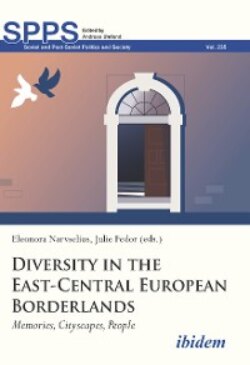Читать книгу Diversity in the East-Central European Borderlands - Группа авторов - Страница 33
На сайте Литреса книга снята с продажи.
Historical Values as City Branding
ОглавлениеHistorical values are utilized for city branding and attracting tourists, somewhat less in Chişinău than in the other cities. In Chernivtsi and L’viv, cafés and restaurants revive old traditions and interiors. In Chernivtsi, local publishers and literary scientists open bookstores, book cafés, and literary centers highlighting the pre-war city culture. In all four cities there is a growing interest in preservation and improvement of old environments, reinforced by NGOs and private initiatives. Such movements are also strong in Chişinău.
Numerous books, conferences, and exhibitions focus on the history and heritage of the four cities before World War II. Much effort has been devoted to beautifying streets and squares with historical references. Jewish, Polish, German, and Romanian heritage is now well-exposed. Highlighting the Central European heritage of western Ukraine also marks a distance to Russia.
Several initiatives focus on preservation of the historical city districts and the multicultural past. Center for Urban History of East Central Europe, founded in Lviv in 2004, leads and coordinates several research projects concerning Jewish and Polish heritage in L’viv. The “Four Shrines Neighborhood,” exposing Jewish culture as well as the Holocaust, has played a special role in the branding of present-day Wrocław as a city of multi-ethnic tolerance. The closing of Bukowina-Zentrum in Chernivtsi is a backlash, but its aims continue in other organizations, including Lvivcenter.
Generally, future prospects for saving cultural heritage and commemorating perished population groups are rather good, but there is still a need for better understanding, not least among investors and other decision-makers. The Holocaust and the Stalinist repressions have attracted increasing interest in all four cities, especially in L’viv. The first Stolpersteine have been placed in Chişinău. In Chernivtsi and L’viv, there is a policy of preserving old wall texts as palimpsests of historical layers. In Wrocław, as in L’viv, the present population takes care of the architectural heritage, even though it was created by vanished population groups. In Chişinău, the tensions between Romanian and Russian culture are not very noticeable today, and both languages are frequently used in daily conversation.
